Ukraine Has Become Europe’s Arsenal
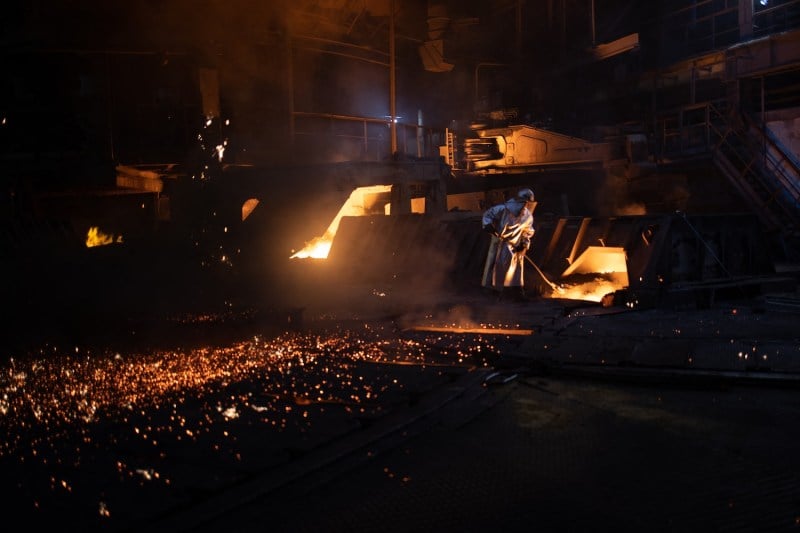
Ukraine Has Become Europe’s Arsenal
The Ukrainian arms industry has kept its own country—and potentially the entire continent—competitive on the battlefield.
An employee works at a blast furnace shop at the steel maker plant company of Zaporizhstal in Zaporizhzhia, eastern Ukraine on September 21, 2023. Andrii KALCHENKO / AFP
KYIV, Ukraine—The office of Practika, a Ukrainian company specializing in armored vehicles, is concealed behind a tall security gate that fences off an anodyne suburban building that is otherwise indistinguishable from the neighborhood’s many residential homes. But step inside and one is immediately thrust into another world: that of Ukraine’s precocious defense sector.
Companies such as Practika have allowed Ukraine to manufacture more than a third of its own battlefield hardware at a fraction of the cost of arms industries elsewhere in Europe. Indeed, Ukraine’s weapon-makers also provide a template—and an opportunity—for modernizing the rest of Europe’s militaries.
KYIV, Ukraine—The office of Practika, a Ukrainian company specializing in armored vehicles, is concealed behind a tall security gate that fences off an anodyne suburban building that is otherwise indistinguishable from the neighborhood’s many residential homes. But step inside and one is immediately thrust into another world: that of Ukraine’s precocious defense sector.
Companies such as Practika have allowed Ukraine to manufacture more than a third of its own battlefield hardware at a fraction of the cost of arms industries elsewhere in Europe. Indeed, Ukraine’s weapon-makers also provide a template—and an opportunity—for modernizing the rest of Europe’s militaries.
Speaking to Foreign Policy in April, Practika’s top executive, Yuliia Vysotska, presented sleek marketing literature that displays a spectacular range of military vehicles, including a mobile guard house, armored trucks, and other tactical multipurpose vehicles mounted with firepower.
“We know exactly what’s needed and can shift quickly as new needs arise because we’re in direct contact with the front,” said Vysotska, who also heads the League of Defense Companies of Ukraine.
About 200 of Practika’s staff, for example, are research and development engineers who repair and adapt the machinery according to the specific, rapidly changing conditions of the battlefield.
“We’ll supply the weaponry of future because this is what war will look like,” Vysotska said, gesturing around herself to indicate all of Ukraine.
Ukrainians such as Vysotska aren’t the only ones championing the country’s dynamic new sector: Denmark, among other countries, is now purchasing equipment including howitzers, missiles, and long-range strike drones directly from Ukraine—and for Ukraine. It is an ideal way for countries without their own developed defense industries to aid Ukraine, and simultaneously to build out Europe’s production capacities. Three Nordic countries, the European Union, and Canada plan to spend roughly $1 billion dollars on the Ukrainian defense market through 2025.
“The Danish model of support is effective and fast,” said Ukrainian Deputy Defense Minister Dmytro Klymenkov last year, “as it allows us to reduce our dependence on international aid and respond flexibly to the frontline.”
And figures in the Danish industry are gushing over it, too: It’s “a win-win for European defence: cheaper, faster supply to Ukrainian forces and a bigger defence industrial capacity for Europe,” wrote Fabrice Pothier of the Danish consulting firm Rasmussen Global in a post on LinkedIn.
Vysotska is obviously proud of the metallurgy company that she took over from her father in the aughts—when it produced safes. In 2009, Practika’s first armored transporter rolled out of its single plant. When Russia invaded Ukraine and annexed Crimea in 2014, Practika switched to diverse tactical combat vehicles, expanding its production, eventually, to three factories and new products—the kind that Ukraine’s military, border guards, and police units urgently required to stem the Russian advance.
Ukraine’s competitive advantage is on full display in Practika’s flagship product: the Kozak 2M1, a nimble, mine-resistant personnel carrier that sports a 14.5 mm heavy machine gun.
“They save the lives of our troops—every day,” Vysotska said, underscoring that the 14-ton model’s V-shaped hull offers special protection against roadside bombs, hand grenades, and anti-personnel explosives. Operated by a crew of two, the Kozak 2M1 transports six troops in full battle gear and hits a top speed of 110 kilometers per hour (68 mph). It lists at around $450,000—about $150,000 to $250,000 less than equivalent models manufactured beyond Ukraine.
Practika is among about 400 established private armament manufacturers in the country that the war has shot to the fore of domestic arms production. (The Ukrainian government counts more than 1,500 military technology start-ups.) So impressively has the private sector stepped up—and outshined the state arms manufacturer that is the primary supplier of Ukraine’s armed forces—that ever more foreign countries are interested in purchasing Ukrainian weaponry for themselves. (It is illegal in wartime Ukraine to sell armaments to foreign buyers for their own purposes.)
Enterprises such as Practika are at the cutting edge of modern warfare, said Taras Kuzio, a political scientist at the Kyiv-Mohyla National University. “Because of this war’s existential nature, Ukraine couldn’t take years to produce military wares, the way it is in the West with so much bureaucracy and long gestation periods,” he said. “These companies have only weeks or months.”
Kuzio predicted that the war would end in Ukraine’s favor, and that the country will be among the world’s five largest arms producers when it’s over. Ukraine’s defense minister said in January that in 2025 alone, the country’s defense industrial capacity could reach 34 billion euros ($35.4 billion)—more than a fifth of Europe’s entire defense industry revenues.
Ukraine’s industry has ramped up exponentially since the full invasion, but it didn’t start from scratch. In the Soviet era, Ukraine was a hub for military-industrial research and development, and factories across the country manufactured missiles, transport aircraft, tanks, surface ships, and marine and aircraft engines. Ukraine remained a producer of armaments and other technology in the post-Cold War decades, but it was between 2014 and 2021 that military procurement shot up 13 times over: from $62 million to $836 million. During roughly the same period, market share of private arms companies more than doubled. After the full-scale invasion began in February 2022, government spending on arms and dual-use goods surged to nearly $31 billion. Setting the stage for this trend were several government reforms, including the creation of the Ministry of Strategic Industries, the implementation of more transparent arms procurement guidelines, and an overhaul of the state-owned arms companies. Nevertheless, when the full invasion began, foreign weaponry constituted the bulk of supply. But in some sectors, that’s quickly changing.
Ukraine’s drone production is already legendary—and more innovations are in the works.
“Ukrainian drones fly further and can carry ever more payload,” said Oleksii Babenko, the owner of Vyriy Drones, a firm that began operations in 2022. Ukraine now produces unmanned aerial systems equipped with payloads capable of striking heavy equipment such as tanks and armored personnel carriers.
Earlier this year, Babenko’s company supplied its first 1,000 drones that had been produced exclusively with Ukrainian components. Vyriy manufactures its own frames, initiation boards, flight controllers, and radio control systems; other domestic companies supply the likes of cameras and video.
“Almost none of these parts were made in Ukraine before the full invasion,” Babenko told Foreign Policy, adding that originally, much of the tech had come from China. When a foreign county requested that Vyriy Drones manufacture several thousand long-range homing strike drones for its own purposes, Babenko insisted that it buy an equal number for Ukraine.
The arms laboratory that is Ukraine has innovations in progress that are reshaping modern warfare. Interceptor drones capable of destroying enemy reconnaissance drones are already in the field. Add to that the likes of long-range missile-drone hybrids that rely on turbojet engines and function similar to cruise missiles; malware-equipped drones that destroy themselves should they be captured; remotely controlled bombs that move on tracked wheels; and remotely guided trolleys, which can be used to transport casualties from the battlefield.
Moreover, the one-drone model is quickly becoming redundant. So-called drone swarms are the future: autonomous, intelligent networks of multiple drones operated by a single system.
One of the Danish government’s tops scores—and the talk of Europe’s defense industry—is the 2S22 Bohdana self-propelled howitzer, a long-range artillery piece mounted on a six-wheel truck chassis, manufactured to NATO specs by the Kramatorsk Heavy Duty Machine Tool Building Plant. The vehicle features an armored cabin at the front and artillery system at the rear that can hit enemy targets up to 50 kilometers (31 miles) away with rocket-assisted artillery projectiles. The Bohdana’s added value over similar weaponry produced in Europe is its precision firing and durability.
Moreover, say the Danes, Ukrainian weapons are easier to maintain in a combat-ready state. And, at 2.8 million euros per unit, the price is half that of its French equivalent and a quarter of Germany’s. The maker claims that it can repair damaged units within 48 hours and unlike the small handfuls in the West, forty units a month are rolling out of the Kramatorsk production facilities.
Europe’s private sector spots a bargain in Ukraine, too. Perhaps the highest-profile example is the German arms manufacturer Rheinmetall, which—in a joint venture with Ukraine’s state-owned arms maker—has already fabricated one factory in Ukraine for armored vehicles and plans to construct three more: a gunpowder production facility, one for artillery shell manufacturing, and an air defense systems production facility.
Direct investment is happening as well.
“We want Western companies to have a stake in the industry, to be part of it, and have an interest in its long-term growth,” said Denys Gurak, a partner at MITS Capital, a Kyiv-based international investment company working on defense. “The Ukraine defense sector is interesting for a West rearming itself in the face of new battlefield threats,” he added.
As the Brussels think tank Bruegel put it in a recent policy brief: Ukraine is becoming “Europe’s arsenal.”
Paul Hockenos is a Berlin-based journalist. His recent book is Berlin Calling: A Story of Anarchy, Music, the Wall and the Birth of the New Berlin (The New Press).
More from Foreign Policy
-

A drawn illustration of a Trump whirlwind on a red background Four Explanatory Models for Trump’s Chaos
It’s clear that the second Trump administration is aiming for change—not inertia—in U.S. foreign policy.
-

Marco Rubio is seen up close, sitting on a couch beside J.D. Vance. Marco Rubio’s Soulless Crusade
The U.S. secretary of state stands for no principle other than serving the man who appointed him.
-

Soldiers from various NATO allies take part in a military exercise at the Smardan Training Area in Smardan, Romania, on Feb. 19. America Will Miss Europe’s Dependence When It’s Gone
European self-reliance for security will cost U.S. jobs, profits, and influence.
-

A collage photo illustration shows Donald Trump gesturing with arms wide. In front of him are headshots of Benjamin Netanyahu and Vlodymyr Zelensky, images of immigratns and ICE police, a tattered EU flag and America First signs. Trump’s First 100 Days on the Global Stage
Ten thinkers on what to make of the opening salvo of the president’s second term.

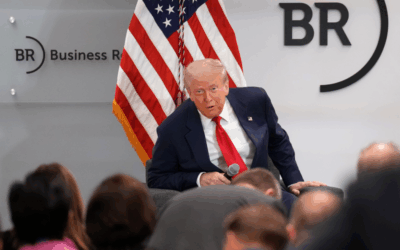


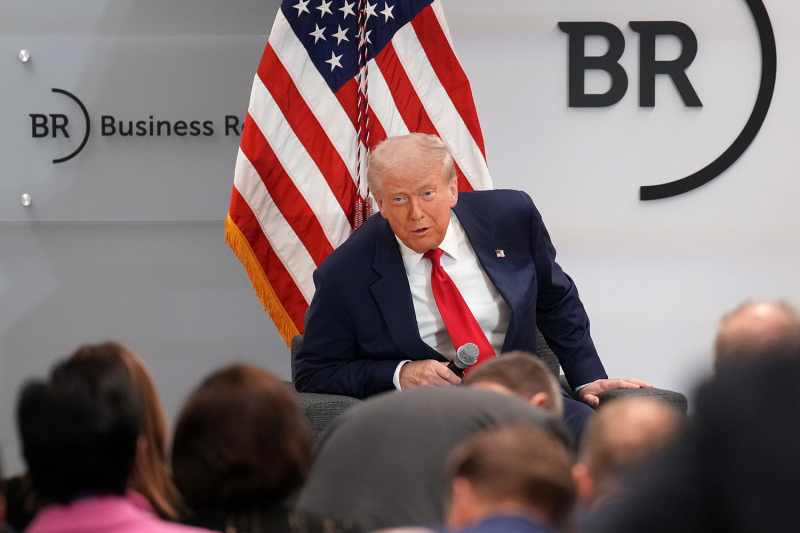
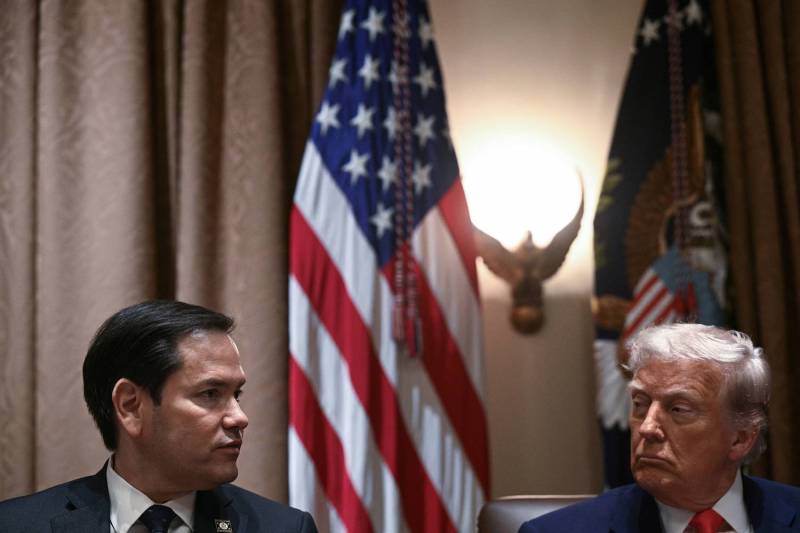
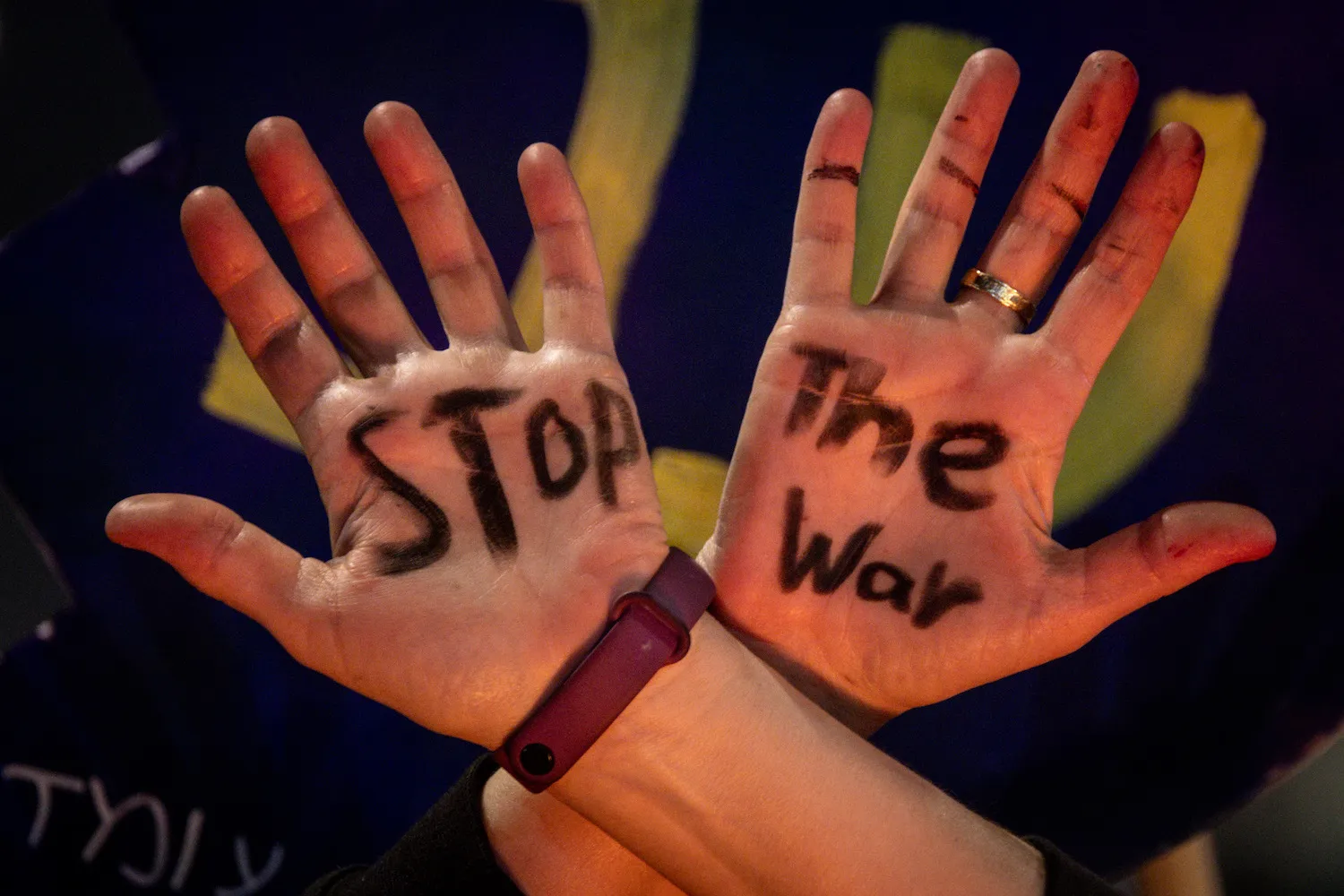

Join the Conversation
Commenting on this and other recent articles is just one benefit of a Foreign Policy subscription.
Already a subscriber?
.
Subscribe
Subscribe
View Comments
Join the Conversation
Join the conversation on this and other recent Foreign Policy articles when you subscribe now.
Subscribe
Subscribe
Not your account?
View Comments
Join the Conversation
Please follow our comment guidelines, stay on topic, and be civil, courteous, and respectful of others’ beliefs.
Change your username |
Log out
Change your username:
CANCEL
Confirm your username to get started.
The default username below has been generated using the first name and last initial on your FP subscriber account. Usernames may be updated at any time and must not contain inappropriate or offensive language.